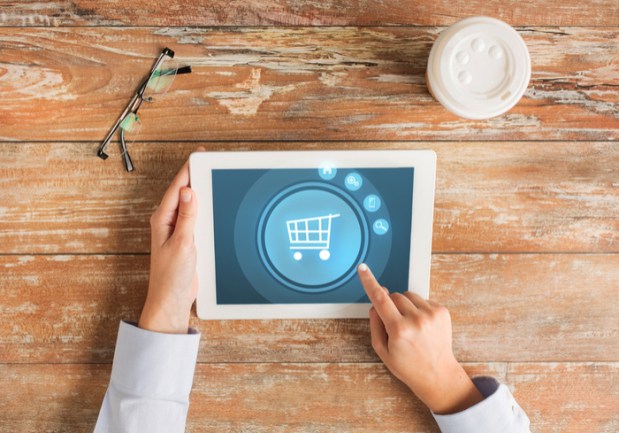The Global Connected Retail Market May Top $82B By 2025

Retail is undergoing a reinvention with the rise of eCommerce, and merchants are trying new approaches to their brick-and-mortar stores. Nordstrom, for example, has rolled out a new store concept, Nordstrom Local, that premiered in West Hollywood.
The idea, according to Senior Vice President of Customer Experience Shea Jensen, is that “shopping today may not always mean going to a store and looking at a vast amount of inventory.” It can, however, “mean trusting an expert to pick out a selection of items.”
Overall, retailers such as Nordstrom are changing their models as an increasing amount of retail spend is now being completed away from physical retail stores. According to the PYMNTS Commerce Connected report, consumers spent $453.46 billion on online purchases in 2017. Here are the latest trends in connected commerce — and how eCommerce will impact retailers in the future.
U.S. online spending saw a growth rate of 14 percent in Q1 2018. A recent study says that U.S. eCommerce will exceed $506 billion this year. By 2022, online retail sales are projected to go beyond $712 billion. The study, which was released by Forrester Research, shows that 98 percent of American adults already go online at least once a day. Many shoppers are choosing eCommerce because the information they find online is often more helpful than what’s available in the store. And, by shopping online, consumers don’t have to deal with certain frustrations, such as not being able to locate sales help. In fact, 6 percent of all possible sales are lost because of a lack of service, according to a report last year from the Massachusetts Institute of Technology’s Sloan School of Management.
Retail spending saw a 1.6 percent annual increase as of Q1 2018. Retail spending also rose between May and June. In July, the Commerce Department told the Wall Street Journal that retail sales increased by 0.5 percent from May to June. During that month, consumer spending at personal care and health stores jumped by the highest monthly rate in over 14 years. In addition, gas prices and vehicle sales also bolstered the increase. At the same time, however, sales at department stores dropped by 1.8 percent as consumers continued to move their spending to eCommerce. Overall, consumer spending increased over the second quarter following slow spending in the winter. During that quarter, retail sales increased 1.9 percent from the first three months of the year. Retail spending was also up 5.9 percent from the second quarter of last year.
About one third — or 32 percent — of consumers find loyalty programs relevant. From collecting pieces for McDonald’s Monopoly to collecting stamps for free cookware at grocery stores and buying 10 coffees to get a free cup, there is no shortage of enticing loyalty offerings. With eCommerce providing easier ways for retailers to form loyalty programs via smartphone apps or through their company websites, loyalty programs are on the rise. According to the 2017 COLLOQUY Loyalty Census, consumers in the U.S. have reached 3.8 billion memberships in overall loyalty programs.This may seem like an all-time high, but research indicates that loyalty program growth is not moving at the same rate as it has in the past. In 2015, there were 3.3 billion memberships, but the growth rate was at 26 percent. Today it has fallen to 15 percent. Given the 3.8 billion loyalty memberships, it appears the top issue consumers have with loyalty programs is that they take too long to earn points. The study showed that 57 percent of people who enjoy these loyalty programs often abandon them for this reason.
The estimated valuation of the global connected retail market by the end of 2025 is $82.31 billion. That potential jump comes as Walmart announced, for example, that it was rolling out same-day delivery service with a twist — customers will be able to text their orders to Walmart. The new service is called Jetblack, and it will allow shoppers to not only order from Walmart.com, but also the websites of rival retailers. Jetblack, according to Reuters, comes care of Walmart’s internal startup incubator Store No. 8. The service has already launched in New York City, and there are reportedly plans to roll the service out to the rest of the U.S. No timeline, however, has been announced for that larger-scale rollout.
The projected value of the IoT industry by 2024 is $6.5 trillion. In terms of growth factors, the falling cost of smart sensors and increased demand for automated technologies is helping to drive this potential increase. A 2017 report said that worldwide spending on the IoT is set to reach $772.5 billion in 2018 — an almost 15 percent increase over the $674 billion that was spent in 2017. The update to the International Data Corporation (IDC) Worldwide Semiannual Internet of Things Spending Guide forecasts that worldwide IoT spending will sustain a compound annual growth rate (CAGR) of more than 14 percent through the 2017–2021 forecast period, surpassing the $1 trillion mark in 2020 and reaching $1.1 trillion in 2021.
The total amount spent by consumers on online retail purchases in 2017 was $453.46 billion. Overall, it appeared that 2017 was a good year for omnichannel shopping, particularly according to the Ecommerce Foundation’s recently released “United States Ecommerce Country Report,” which covered eCommerce data from the last year. That data strongly indicates that 88 percent of consumers pre-research products online before making a purchase either online or in-store. The same information set indicated that 72 percent of consumers had planned to shop specifically on Amazon during the holiday season, while only 60 percent planned to set foot in a physical, brick-and-mortar establishment.
As for Nordstrom Local, the retailer announced two more Los Angeles locations following a positive reception from customers. Will the retailer roll out more even more smaller stores? Time will tell.
